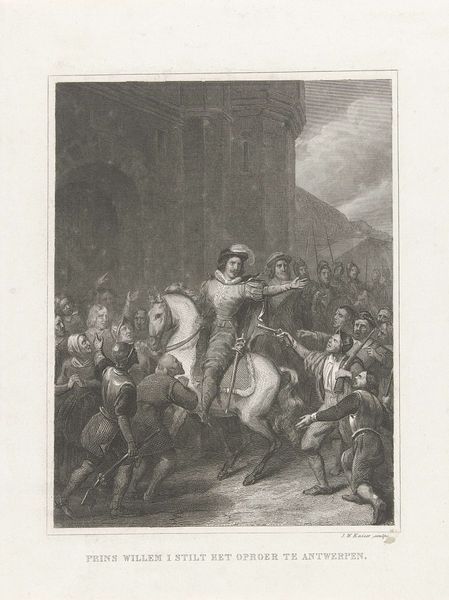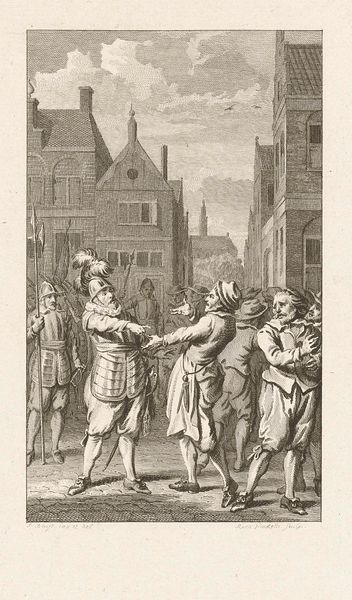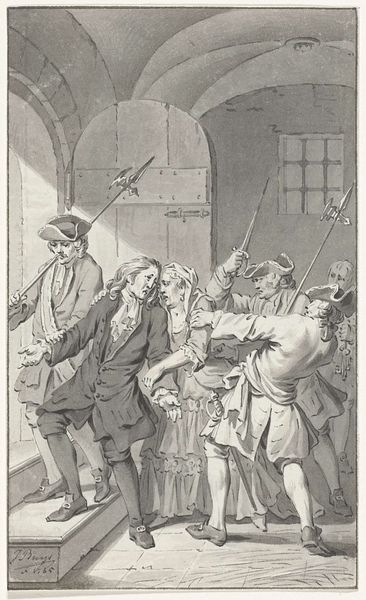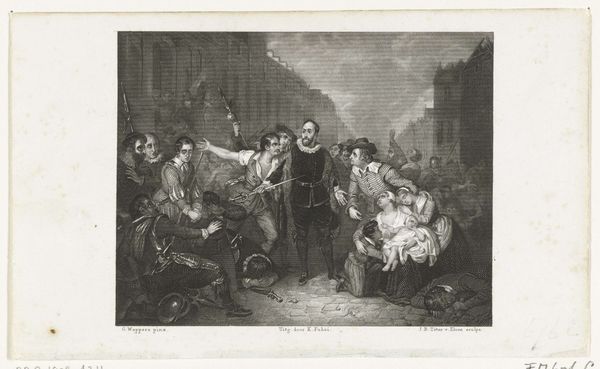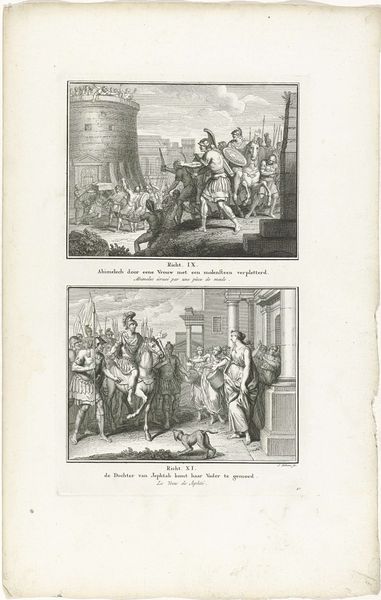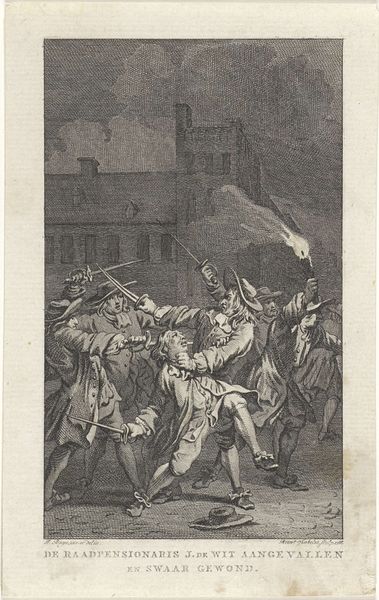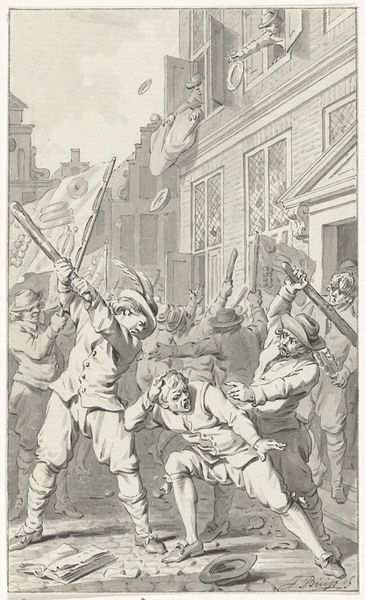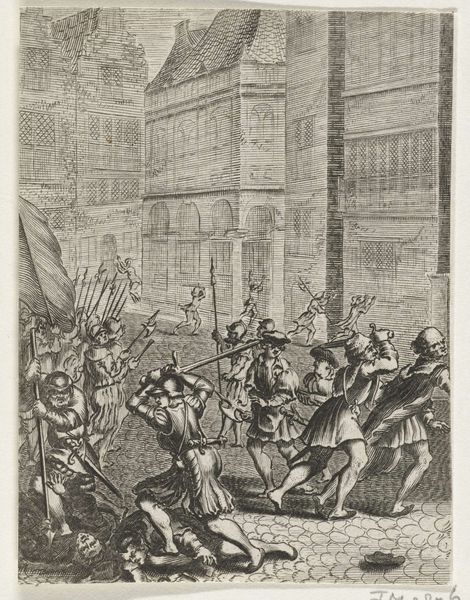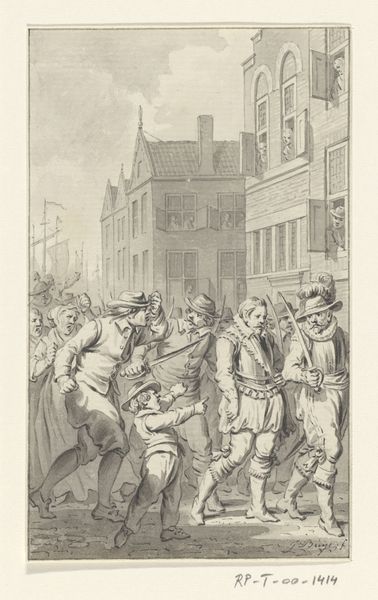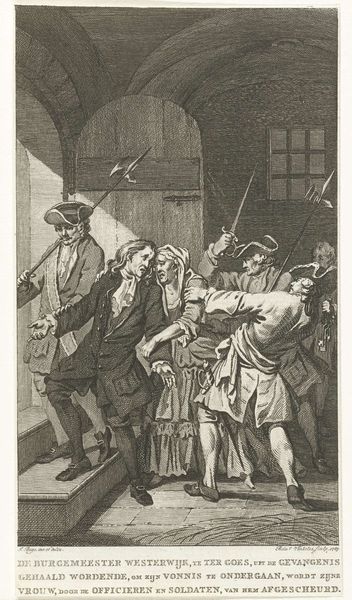
Gevangenneming van Caspar de Robles, 1576 1851 - 1853
0:00
0:00
print, engraving
#
medieval
# print
#
old engraving style
#
genre-painting
#
history-painting
#
engraving
#
realism
Dimensions: height 235 mm, width 174 mm
Copyright: Rijks Museum: Open Domain
Curator: This is "Gevangenneming van Caspar de Robles, 1576", or "The Arrest of Caspar de Robles, 1576," an engraving dating from 1851-1853, now held at the Rijksmuseum. It’s the work of Jan Frederik Christiaan Reckleben. Editor: Immediately, I'm struck by the intense activity depicted here. The stark contrast achieved with the engraving technique lends a certain drama. Look at the way the light falls, creating distinct areas of focus and shadow, almost like a stage. Curator: Precisely. Reckleben captured a key moment during a turbulent period. Robles, a Spanish governor, was seized by mutinying Spanish soldiers. They were angry about unpaid wages, sparking the beginning of the end of Spanish control in the Netherlands. The print’s realism reinforces a sense of documented historical narrative. Editor: Observe how the composition guides the viewer's eye. The central figure, presumably de Robles, is framed by gestures of accusation and command, directing our attention to the tension inherent in the situation. His clothing, darker than that of his captors, perhaps signals the moral dimensions of the event? Curator: The Dutch narrative at the time certainly leaned that way. Prints like this served a clear political function: cementing national identity by illustrating heroic acts of resistance, conveniently overlooking inconvenient truths, like internal divisions within the rebellious faction. The engraver’s emphasis on this moment reinforces the broader story of Dutch independence. Editor: Technically, the linework seems deliberately emphatic, further enhancing the feeling of urgency and perhaps…righteous indignation? The varying densities of the etched lines create depth, giving volume to figures despite the flat picture plane. Even the chaotic gestures resolve into a structured pyramidal form, focusing our gaze on De Robles, which makes me think this supposed "realism" is hardly neutral. Curator: You're right to question that "neutrality." Reckleben, though depicting a historical event, isn’t free from bias. He’s actively constructing a specific historical memory, fitting within a nationalistic framework that valorized the Dutch revolt. And, the very act of transforming it into a genre painting for popular consumption altered its message. Editor: The use of black and white in this medieval style makes it feel timeless, adding to the gravitas of the subject matter and yet creating stark separation in morality. Curator: Agreed. It's a potent reminder that art—even seemingly documentary prints—is always embedded in a web of social, cultural, and political meanings. Editor: I see it too as an object worthy of careful contemplation given the craft apparent.
Comments
No comments
Be the first to comment and join the conversation on the ultimate creative platform.
